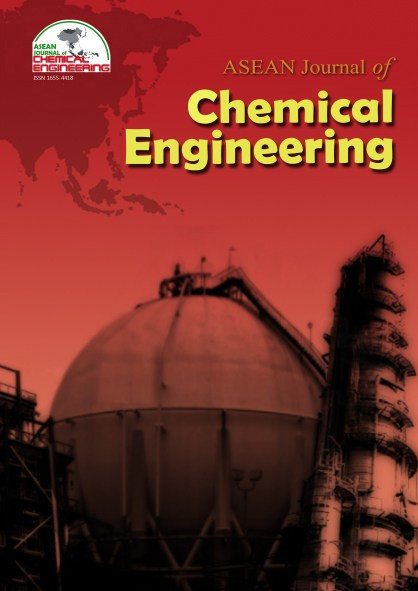A Morphology Studies On Effect Of A Coagulation Bath Mediums As The Phase Inversion Parameter For Poly (Vinylidene Fluoride) (Pvdf) Membranes
Abstract
In recent years there has been a considerable interest in modifying the PVDF membrane properties to suit with a wide range of applications. However, due to the multivariate nature in membrane fabrication steps, the fabrication techniques remain the key issue. In this article, the uses of different concentration of ethanol in the coagulation bath were investigated as it can improve the hydrophobicity of PVDF membrane and the membrane porous microstructure, i.e. finger-like microstructure. In addition, the coagulation mediums play an important role in determining extended of liquid-liquid demixing/crystallization via an immersion precipitation process. In this study, the effects of coagulation bath mediums on the morphology of PVDF membrane were investigated. Scanning electron microscope (SEM) was used to characterize the membrane microstructure. Octanol was used as a medium to estimate porosity of the membrane by determining the weight of liquid occupied within the membrane pores. The concentration of ethanol in the coagulation bath was varied at 0% until 75% with different evaporation time of 0 and 2 min. The SEM results indicate that the membrane surface porosity changes as ethanol concentration increases. Interestingly, at 0 to 25% ethanol, an asymmetric structure which consists of a dense skin layer accompanied by finger-like structure was formed during membrane casting. The more porous finger-like region which extends towards the skin layer is beneficial for membrane fuctionalization.References
2. A.L. Ahmad, W.K.W Ramli, W.J.N. Fernando, and W.R.W. Daud (2012). Effect of ethanol concentration in water coagulation bath on pore geometry of PVDF membrane for Membrane Gas Absorption application in CO2 removal. Separation and Purification Technolog, 44, 11-18.
3. K Holda, B. Aernouts, W. Saeys, and Ivo F.J Vankelcom (2013). Stuy of Polymer concentration and evaporation as phase inversion parameters for polysulfone-based SRNF membrane. Journal of Membrane Science, 442, 196- 205.
4. B.F.K. Kingsbury, Z. Wu, and K. Li (2010). A morphological study of ceramic hollow fiber membrane: A perspective on multifunctional catalytic membrane reactors. Catalysis Today, 306-315.
5. B.S. Ooi, N.S.M. Yatim, A.L. Ahmad, and S.O. Lai (2012). Preparation of Polyvinylidene Fluoride Membrane Via Dual Coagulation Bath System and Its Wettability Study. Journal of Applied polymer Science, 124, 225-232.
6. D.M. Koenhen, M.H.V. Mulder, and C.A. Smolders (1977). Phase Separation Phenomena During the Formation Asymmetric membrane. Journal of applied Polymer Science, 26, 199-215.
7. F. Liu, N. A. Hashim, L. Yutie, M. R Moghareh Abed, and K. Li (2010). Progress in the production and modification of PVDF membrane. Journal of Membrane Science, 375, 1- 27.
8. G. Arthanareeswaran, D. Mohan, and M. Raajenthiren (2010). Preparation, characterization and performance studies of ultrafiltration membrane with polymeric additive. Journal of Membrane Science, 350, 130-138
9. H. Strathmann (2003). Rationale for preparation of Loeb-Sourirajan-type cellulose acetate membrane. Journal of Applied Polymer Science, 15, 811-823.
10. Soroko, M.P. Lopes, and A. Livingston (2011) The effect of membrane formation parameters on performance of polyimide membranes for organic solvent nanofiltration. Journal of Membrane Science, 381, 163-171.
11. K. Nath (2008). Membrane Separation Processes. New Delhi: Prentice-Hall of India Private Limited.
12. L. Gao, B. Tang, and P. Wu. (2009). An experimental investigation of evaporation time a relative humidity on a novel positively charged ultrafiltration membrane via dry-wet phase inversion. Journal of Membrane Science, 326, 168-177.
13. M Joskowska, I. Kopczynska, B. Debski, D. Holownia-Kedzia, R. Aranowski, and J. Hupka (2012). Wetting of Supports by ionic liquid used in gas separation processes. Physicochemical Problems of Mineral Processing, 147, 129-14
Copyright holder for articles is ASEAN Journal of Chemical Engineering. Articles published in ASEAN J. Chem. Eng. are distributed under a Creative Commons Attribution-NonCommercial 4.0 International (CC BY-NC 4.0) license.
Authors agree to transfer all copyright rights in and to the above work to the ASEAN Journal of Chemical Engineering Editorial Board so that the Editorial Board shall have the right to publish the work for non-profit use in any media or form. In return, authors retain: (1) all proprietary rights other than copyright; (2) re-use of all or part of the above paper in their other work; (3) right to reproduce or authorize others to reproduce the above paper for authors’ personal use or for company use if the source and the journal copyright notice is indicated, and if the reproduction is not made for the purpose of sale.



